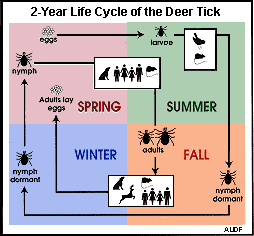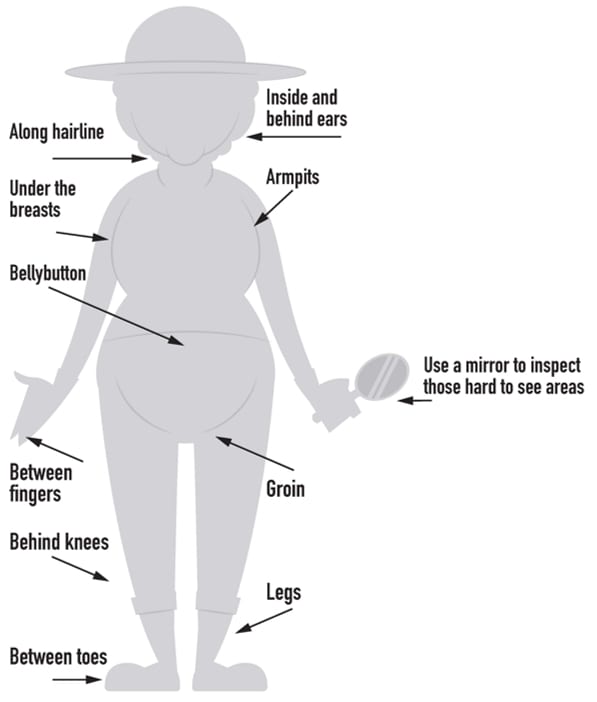Just last week we posted a pretty good rundown on what to do about ticks—and how. So if you need a review, just call up “Tick, Tack, Toe the Line: Lyme Disease and What to Do” and carry on from there. Remember, the basic idea is no matter which life stage they’re at, know how to protect yourself. Because you can’t count on feeling them crawling on you.
And speaking of life cycles—OK, so the blacklegged tick’s larvae have finished, the nymphs are mostly dormant right now, and the adults have yet to strut their stuff. But that’s no reason to let down your guard. If you’ve been following our posts, you know that there’s a new tick in town (and if you’re following the news, another waiting in the wings.) Their life-cycles can be different. Be watchful!
So here’s what you do:

Steer clear of hitchhikers. Ticks don’t survive long in most homes because of low humidity, but still—you’re safest if you put your clothes in a clothes dryer and run it on high heat for 20 minutes. The tumbling action of the dryer and the high heat kill ticks and similar critters.
Wear tick-killing clothing. Information on proper application of permethrin can be found on our post “Minimize tick risk while minimizing pesticide risk.” Also consider buying pretreated cloths or sending your outdoor socks, pants, and shirts for professional treatments.
(Permethrin is an insecticide in the pyrethroid family. Pyrethroids are synthetic chemicals that act like natural extracts from the chrysanthemum flower. BTW, plants can’t run—that’s why many have evolved chemical means of protection. So say I went the DIY route, soaked some mums in oil, put the oil in a spray bottle, and spritzed my pants. But it failed to repel or kill ticks the ticks I bumped up against. Why? Mums come with a cocktail of natural chemicals inside those lovely flowers. And for permethrin and thus for repelling and killing ticks, I’d need to have the right chemicals in my brew—not to mention the know-how for making the stuff.)

Check for ticks. It bears repeating. Do a tick check at least once a day. Get to know the spots and bumps on your skin so you can recognize new ones. New ones that just happen to have legs.
Protect your pets. Just like people, pets can encounter ticks and acquire tick-borne disease. They can also bring ticks inside with them, which might expose you to ticks. So if your pet goes outdoors, it should have some protection against ticks. Ask your vet. And give it a tick check too—every day.
Remove ticks safely. Only one method has been officially evaluated for its ability to safely remove ticks — using sharp tweezers, grab a tick as close to the skin as possible and gently pull up. Other methods could increase the risk of acquiring a tick-borne disease. To learn more, see our post “It’s tick season. Put away the matches.”
Swimming or bathing won’t kill ticks, whether attached or not.
Ticks have a different system of breathing than humans. You can immerse them in water for hours and they won’t croak. Besides, swimming or bathing might not be enough to remove an unattached tick crawling on your body. The best way to kill a tick? Remove it safely with pointy tweezers, then place in a jar of rubbing alcohol.
And there you have it. If we don’t see you at our statewide conference Breaking the Cycle: Integrated Management of Ticks and Mosquitoes on August 7 (9 AM at the Westchester County Center, 198 Central Ave, White Plains, New York), we’ll have a video of the conference uploaded on our website soon after.
It’s not too late to register. Open to the public!
And, as always, we have more Tick Information on our DON’T GET TICKED NEW YORK homepage